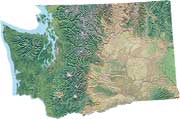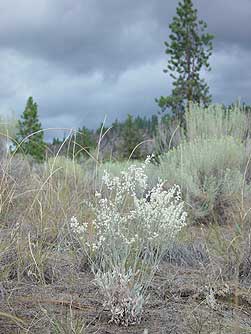
Snow buckwheat and plant community
Snow buckwheat or Eriogonum niveum is an amazing plant for its beauty, ability to withstand severe drought, its ecological value in sustaining a variety of animal species, and its ability to thrive on sandy, gravelly arid ground without becoming weedy. Snow buckwheat blooms at the driest time of year, producing a profusion of airy white blossoms that provide nectar and pollen for many kinds of late-summer bees, beneficial wasps and butterflies, some of them rather hard to find. Its attractive blue-green foliage also serves as the host plant for aridland butterflies such as acmon-lupine blue and the mormon metalmark, a fall-flying butterfly that is endangered in Canada. As a low-growing evergreen half-shrub, snow buckwheat also provides late-winter browse for mule deer and big horn sheep.
Snow buckwheat grows among bluebunch wheatgrass, needle-and-thread grass, silky lupine, gray rabbitbrush and green rabbitbrush and blooms at about the same time as the rabbitbrushes. Its distribution covers the Columbia basin from the Okanogan Valley in BC south to Central Oregon and east to Central Idaho.
According to Young and Young's Collecting,
Processing and Germinating Seeds of Wildland Plants,
achenes of Eriogonum species "generally" germinate with no pre-treatment.
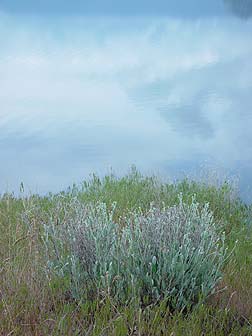
Snow buckwheat - May
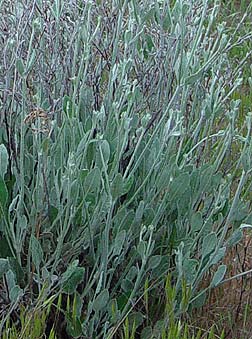
Snow buckwheat leaves - May
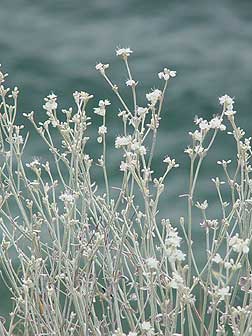
Snow buckwheat - August
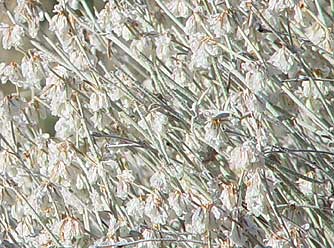
Snow buckwheat flowers - September
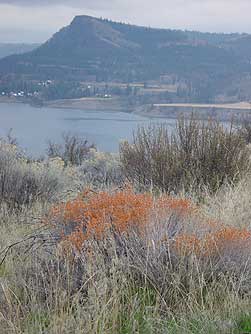
Snow buckwheat in October
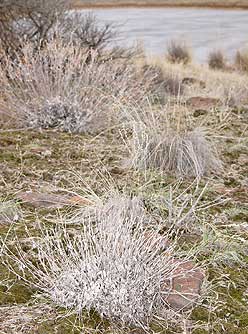
Snow buckwheat in winter - Ancient
Lakes
